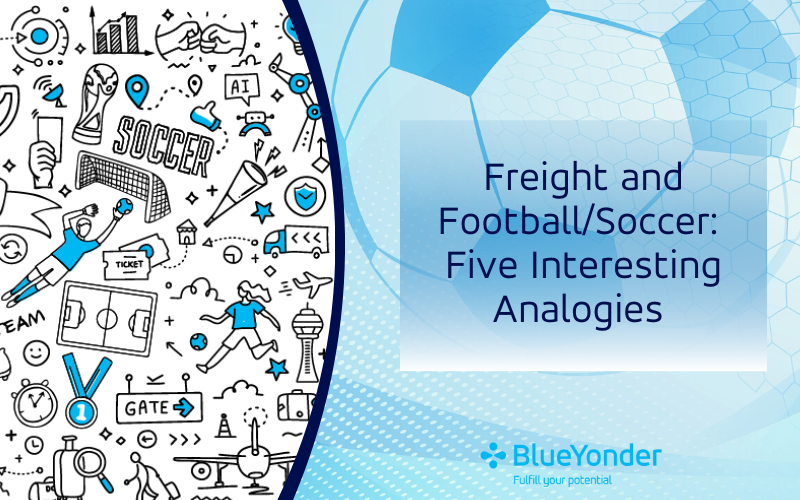Freight and Football/Soccer: Five Interesting Analogies
The whole world is gripped by football/soccer fever these days with the FIFA Football World Cup in Qatar springing one surprise after another. Almost half of the world’s population is glued to their TV sets, following every goal. Even those who do not count themselves as football/soccer fans cannot have enough of it. Whether you consider yourself a fan or not, I am 100% sure you will love the fantastic goal in the video below.
You may wonder, what is the point of sharing a more than four-year-old clip? I do this to point out the sheer analogy between such a goal – which in the commentator’s words “oozes class” – and the freight management/logistics management industry. I am reminded of these analogies on a daily basis when I listen to our customers share their logistics/transportation challenges and how Blue Yonder helps them address those challenges.
Here are five soccer analogies that will help you succeed in the freight management/logistics management industry:
1. Planning: Like soccer, logistics requires a highly-optimized planning through a network of players from one end to another.
As the ball is moved, there are times when – as a spectator – you feel that the player should have passed the ball to his right, but he passes to the left side. Towards the end of the goal, you see one of the players let the ball pass through his legs and you feel an opportunity has been missed. Well, sometimes the most obvious option is the not the most optimized one.
In the transportation/logistics industry, the most cost-effective route or the shortest route may not be the most optimized one. That is why you need a powerful optimization engine that can account for hundreds of rules and constraints to find the most optimized route and network for you.
2. Player Formation/Positioning: In soccer, players need to be well aware of their positions, as well as those of their teammates – the defenders, the midfielders and the forwards. They also have to be aware of the position of the opposing team’s players too. In the logistics world, this is akin to knowing where your manufacturers are, where your distributors/wholesalers are, where your carriers are and where your retailers are, as you move your freight forward in cahoots with the players in your network. If you are not aware of your internal and external players, you risk degrading service levels or negative customer experience.
3. Playing Off a Single Playbook, While Sharing Data: Thirdly, as the players are moving forward, they are all playing off a single playbook to execute their plans. They are yelling at each other, i.e., sharing information or data with each other, as they navigate through the opponent’s players. They are not working in silos. In supply chain, it would mean all the internal players are working off a single platform and sharing data/information with each other. At Blue Yonder, this happens via our Luminate Platform, which is where all our solutions are built and deployed on, thus facilitating a seamless flow of data across all our solutions. This helps ensure elimination of latency at interfaces and makes our customers highly agile and efficient with their decision-making process.
4. Continuous Optimization in the Face of Moving Constraints: Fourthly, to me, the opponent’s players are like “constraints”. You need to work your way around these constraints to score a goal. However, the constraints not only exist, but they are also constantly moving, i.e., changing position. This is what often gives rise to a disruption in the supply chain. What do you do then? Well, you change your plan and find the next most optimized strategy. Blue Yonder’s Luminate Platform provides our customers an end-to-end view of their entire supply chain – from mile zero to the last mile. With such an end-to-end visibility, our customers’ logistics and transportation teams can easily sense these moving constraints ahead of time and take corrective action, thus avoiding a disruption scenario. This is continuous optimization in the face of changing or moving constraints.
5. GOAL!!!: Finally, you score a fabulous goal – a goal that “oozes class.” Of course, on a football/soccer pitch, the goal is to put the ball in the opponent’s net. However, in the case of logistics, the goal for Blue Yonder is to reduce the overall transportation expense of our customers, improve the productivity of the planners, and enhance the overall service levels for our customers.
Here at Blue Yonder, we score such well-coordinated goals many times each day – and every day! – for our customers. I hope one day there will be a Supply Chain World Cup. I am confident that Blue Yonder would be crowned the World Champion!

